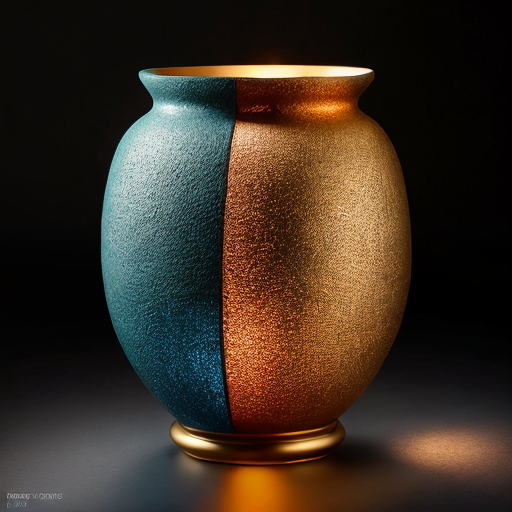Unearthing the Past: The Intersection of Archaeology and Art History
Unearthing the Past: The Intersection of Archaeology and Art History delves into the intricate connection between these two disciplines. Archaeology and art history are closely related as they both seek to understand and interpret the material culture of past civilizations. Archaeologists excavate and analyze artifacts to uncover the historical context in which they were created, while art historians study the visual and aesthetic aspects of these artifacts to gain insight into the beliefs, values, and practices of ancient societies. By combining their expertise, archaeologists and art historians can paint a more comprehensive picture of the past, shedding light on the artistic achievements and cultural significance of ancient civilizations.
Tracing the Threads: Exploring the Shared Roots of Archaeology and Art History
An interesting fact about how archaeology and art history are related is that both disciplines often rely on each other to gain a comprehensive understanding of ancient civilizations and their artistic expressions. While archaeology focuses on the excavation and analysis of physical artifacts, art history examines the aesthetic and cultural significance of these artifacts. By combining the findings of both disciplines, researchers can reconstruct the historical context, social practices, and artistic techniques of past societies, providing a more holistic understanding of ancient art and its role in shaping human history.
Tracing the Threads: Exploring the Shared Roots of Archaeology and Art History uncovers the deep connections between these two disciplines. Archaeology and art history share a common goal of understanding human creativity and expression throughout history. While archaeologists focus on the physical remains of past cultures, art historians delve into the visual and symbolic meanings embedded in these artifacts. By collaborating and drawing upon each other's methodologies, archaeologists and art historians can piece together a more comprehensive narrative of the past, revealing the intricate relationship between art, society, and human experience.
Unveiling Ancient Aesthetics: The Synergy between Archaeology and Art History

Unveiling Ancient Aesthetics: The Synergy between Archaeology and Art History highlights the symbiotic relationship between these two fields of study. Archaeology and art history are intrinsically linked through their shared interest in unraveling the visual and material culture of past civilizations. Archaeologists excavate and analyze artifacts to uncover the historical context in which they were created, while art historians study the aesthetic qualities and symbolic meanings of these artifacts. By combining their expertise, archaeologists and art historians can provide a more holistic understanding of ancient societies, shedding light on the artistic achievements and cultural practices of bygone eras.
The collaboration between archaeology and art history allows for a multidimensional exploration of the past. While archaeologists focus on the physical remnants of ancient civilizations, such as pottery, sculptures, and architectural structures, art historians delve into the stylistic elements, iconography, and cultural significance of these artifacts. By examining artifacts through both archaeological and art historical lenses, researchers can gain insights into the social, religious, and political contexts in which these objects were produced and used. This interdisciplinary approach enables scholars to reconstruct the visual and material worlds of ancient peoples, offering a richer understanding of their beliefs, values, and artistic expressions.
Furthermore, the synergy between archaeology and art history enables scholars to trace the evolution of artistic styles and techniques across different time periods and regions. By analyzing the similarities and differences in artistic production, researchers can discern patterns of cultural exchange, innovation, and influence among ancient societies. Through comparative studies of art and material culture, archaeologists and art historians can identify connections between distant civilizations, uncovering shared artistic traditions and cross-cultural interactions. This comparative approach not only enhances our knowledge of ancient aesthetics but also provides valuable insights into the interconnectedness of human creativity and expression throughout history.
In addition, the collaboration between archaeology and art history plays a crucial role in preserving and interpreting the cultural heritage of past civilizations. By studying and documenting ancient artifacts, researchers can contribute to the conservation and restoration of archaeological sites and artworks, ensuring their protection for future generations. Through their research and analysis, archaeologists and art historians can also contribute to the development of museum exhibitions, educational programs, and public outreach initiatives that promote a deeper appreciation of ancient art and material culture. By sharing their findings with the broader public, scholars can foster a greater understanding of the significance of archaeology and art history in illuminating the richness and diversity of human heritage.
Beyond the Surface: Unraveling the Cultural Tapestry through Archaeology and Art History
Fun fact: Archaeology and art history are closely intertwined as both disciplines rely on the study and interpretation of visual materials. While archaeology focuses on the excavation and analysis of physical artifacts to understand past cultures, art history examines the aesthetic and cultural significance of artworks throughout history. By combining their expertise, archaeologists and art historians can gain a more comprehensive understanding of ancient civilizations, as art provides valuable insights into the beliefs, social structures, and daily lives of past societies.
Beyond the Surface: Unraveling the Cultural Tapestry through Archaeology and Art History underscores the interconnected nature of these disciplines in uncovering the complexities of ancient civilizations. Archaeology and art history work in tandem to delve beneath the surface of artifacts and artworks, revealing the intricate layers of cultural meaning embedded within them. By examining the material remains of past societies through archaeological excavations and art historical analysis, researchers can unravel the cultural tapestry of ancient civilizations, shedding light on their beliefs, practices, and artistic expressions. This collaborative approach allows for a deeper understanding of the multifaceted ways in which art and material culture reflect and shape the social, religious, and political dynamics of bygone eras.

